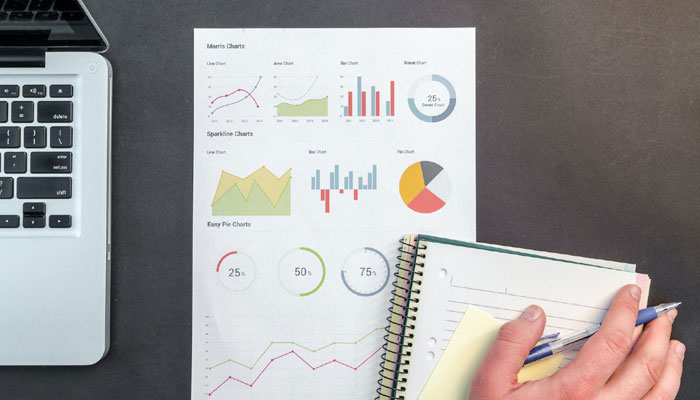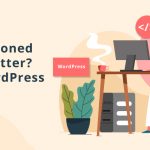Types of Sales Forecasting: For any business, forecasting is a valuable factor in the form of pre-planned steps enabling you to make sure for the future. Using sales forecasting methods will help you anticipate gaps and surpluses in advance. So you can avoid any future losses.
Why Every Business Needs Forecasting Methodologies – Types of Sales Forecasting

Knowing the benefits of forecasting in the enterprise is essential for any business regardless of industry. It is an opportunity where the business has already started investing money to grow the market quickly and relevantly.
A question arises here. How to know about sales, since they are enough to support the development of the new product? Here, methods for forecasting sales play a crucial role. According to the Aberdeen Group’s research report, organizations with accurate sales forecasts are 10 percent ahead to grow their year-to-year business revenue. As an enterprise, you can be ahead of your competitors and be the audience most likable.
Short Term vs. Long Term – Types of Sales Forecasting
Businesses are likely to find sales predictions through sales forecasting for future production. It can be done in two ways: sales forecasting for long term & sales forecasting for the short term.
1. A short-term sales forecast
Achieving challenging sales quotas, ensuring the production schedule to satisfy demand, and finally making smart decisions for the future production cycle, is helpful. It is even useful for a business facing rapid market shifts or some market-based fluctuations. A short-term forecast helps to calculate estimates for any business on a monthly, quarterly, biannual, and annual basis.
2. Long-term sales forecasts
Long-term forecasting of sales is long-term for the business sales projections. However, long-term forecasting is particularly relevant for industries with higher upfront investments in types of equipment for real estate, construction, and more.
There are 6 modern sales forecasting – Types of Sales Forecasting
- Length of Sales Cycle Forecasting
- Opportunity Stage Forecasting
- Intuitive Forecasting
- Historical Forecasting
- Multivariable Analysis Forecasting
- Pipeline Forecasting
1. Length of Sales Cycle Forecasting
Since the technique of the length scale depends on objective data rather than feedback, it uses the age of individual opportunities for future prediction of sales. CRM platform helps best integrate and track all sales data here. If your CRM doesn’t integrate with your marketing software, this logs interactions automatically; your team needs to update and stop wasting manual entry time.
The length of sales forecasting methods requires an average sales cycle lasting four months, and your salesperson has been working on an account for two months, your forecast may suggest that they have 35 percent chances of getting the deal. If a business goes with a healthy lead, it may take about six months to close the deal, but the sales deal closes faster than any other sales cycle using this technique. Yes, you can bucket each type of deal with the average length of the sales cycle.
You will need to carefully monitor and track all the details for how and when prospects enter the pipelines of your salespeople to get accurate and predefined output for your business sales.
2. Opportunity Stage Forecasting – Types of Sales Forecasting
While defining your sales goals you may find opportunities to schedule a customer discovery call is less than the demo stage. Opportunity stage forecasting is the method that helps to deal with future sales predictions at different stages of the sales process. With this sales forecasting technique, the further deals in the pipeline are likely to close. Knowing about data sources and their priority depends heavily on the historical business data.
If you change your message, products, sales process, or any other variable, your deals will close by stage at different percentages than they did in the past. Usually, it’s for a month, quarter, or a year once you plan to view the reports. So if you want to change the products or any process, you’ll find the difference according to previous reports.
Here you have to motivate and trust your sales teams to make their pipelines clean and prioritize, which is not always feasible. Creating a sales forecast seems easy, but the results are often imprecise due to some variations.
3. Intuitive Forecasting
Intuitive forecasting is a method of creating a forecast analysis based on the use of your business data. The data is used to generate your business demand requirements for better intuitive planning modules. And in the Intuitive planning functions a complete forecast analysis is done and available. All you need is the historical data to build and analyze the data based on the appropriate sales forecasting methods to calculate future needs, and the expert system.
The important thing to know is it doesn’t require a forecasting background. So it’s easy and flexible to create precise forecasts for any business. This method of forecasting is most crucial if you start predicting in the very early stages.
4. Historical Forecasting
To get better production strategies, companies use factual forecasting for production and operations management. This forecast focuses heavily on future outcomes and involves several different estimation methods. Historical data demand is therefore high as past data used as a benchmark, rather than the basis of your sales forecast. The key benefit of the method is to get precise forecasting analysis based on the business data provided with valuable information for better decisions for the organization’s future.
5. Multivariable Analysis
The multivariate method of forecasting relies on the statistical sense of different models, which were attempts to generalize extrapolation. The most delicate method of forecasting is multivariable as it uses predictive analytics and incorporates several other factors, such as the likelihood of closing based on type of opportunity, average length of the sales cycle, and performance of the individual sales. Multivariate models consist of several parameters, and each additional parameter is an estimated quantity factor for future prediction of sales.
However, an advanced analytics solution needs to be performed to process with this method, so it isn’t always feasible. Still, you can go with a detailed analysis if you want to achieve an excellent forecasting output.
6. Pipeline Forecasting
Pipeline forecasting is the process to follow when working on the sales pipeline from a business sales team. Where enhanced pipeline forecasting combines with the primary pipeline and smart sales velocity modeling to extend forecast predictions beyond the immediate pipeline is brought about. The pipeline forecasting method helps to improve the sales team’s level of accuracy and understanding. It works on two major goals: first, building a healthy pipeline, and second, winning the predefined deals.
It relies purely on your capacity to provide high-quality data. So, if you compromise the numbers of incomplete data, you will end up with no forecasting results or zero value.
Process and resources needed for accurate forecast sales
Settling on big business choices is relying on great information. So you’ll have to accumulate the right resources to start gauging.
Your point-by-point dealing process:
What are the repeatable advances you can take in moving a potential customer from prospect to client? You can’t analyze and develop on the off chance you don’t start with a robust basic deal process.
Individual and group goals:
What do you and your group intend to achieve? Start by characterizing reasonable targets that work with your overall system of deals.
Standardized meanings of leads:
This may seem glaringly obvious; however, your business’ unpredictability may mean that there is some disarray around when a point is a lead, opportunity, or prospect.
Information about item costs, market, or variances in value
Again, it relies on what you are selling, yet it knows the expenses of working together and keeps your ear to the ground with regard to the market.
A flexible CRM
Every business needs an approach for tracking and updating sales goals or deals previously decided upon. CRM is the platform with everything that gives a company, and the sky’s not the limit.
The Aberdeen Group’s equivalent investigation indicated that for non-CRM power customers, business or sales teams that rely heavily on their CRM process hit their standards 82 percent of the time versus 65 percent.
On all of these, you will need to make sure that you watch out for internal factors that might change your conjecture, such as including or expelling sales teams from your group, or changing approaches that will influence how your business group operates.
An essential general guideline is to update your estimate when there are changes to your business group.
Read More:
- BE SUCCESSFUL WITH FREEMIUM: A TRENDY WAY OF MONETIZATION
- WHAT IS VUE STOREFRONT AND WHY IS IT THE FUTURE
























